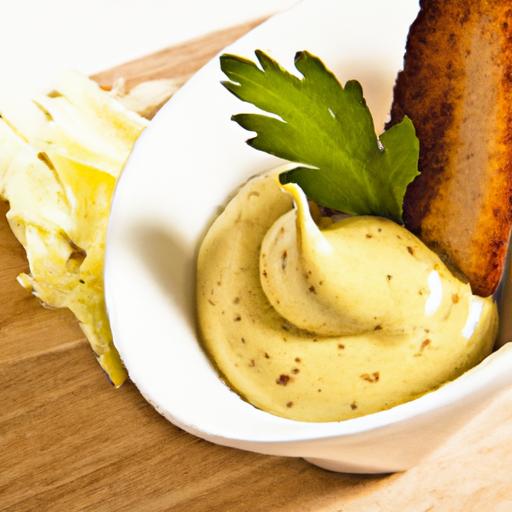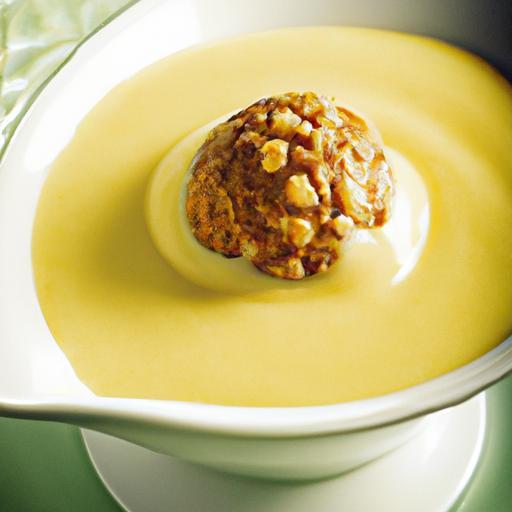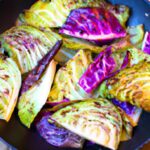In the world of culinary alchemy, few ingredients wield the subtle yet transformative power of mustard. Beyond its tangy kick and vibrant hue lies a fascinating secret: mustard’s remarkable ability to weave oil and water into harmonious emulsions. This everyday pantry staple is, in essence, a molecular magician-breaking barriers and blending opposites in ways that elevate dressings, sauces, and spreads from simple mixtures to velvety delights. Join us as we delve into the science behind mustard’s emulsifying prowess, uncovering the chemistry and artistry that make it an indispensable ingredient in kitchens around the globe.
Mustard magic is not just a culinary delight but a fascinating journey into chemistry that transforms ordinary emulsions into silky, stable blends. From the tang of Dijon to the earthy warmth of whole grain, mustard’s unique molecular makeup acts as nature’s perfect bridge between oil and water. This secret gives your dressings, sauces, and marinades that velvety consistency and harmonious flavor balance that food lovers crave.
Prep and Cook Time
Preparation: 10 minutes
Cook Time: None (for emulsifying purposes)
Yield
Approximately 1 cup of emulsified dressing or sauce, serving 4-6 people
Difficulty Level
Easy – Perfect for beginners and seasoned chefs alike
Ingredients
- 2 tablespoons Dijon mustard (for a smooth, mildly spicy foundation)
- 1/2 cup extra virgin olive oil (room temperature)
- 1/4 cup white wine vinegar (or lemon juice for brightness)
- 1 teaspoon honey (to balance acidity)
- Salt and freshly ground black pepper to taste
- Optional: 1 minced garlic clove or 1 teaspoon minced fresh herbs (tarragon, parsley)
Instructions
- Combine Dijon mustard, vinegar, honey, salt, and pepper in a medium bowl. Whisk vigorously for about 30 seconds. This initial step activates the mustard molecules that promote emulsification.
- Slowly drizzle in the olive oil while continuously whisking. Pouring the oil gradually allows the mustard’s hydrophobic and hydrophilic regions to surround tiny oil droplets, preventing them from separating.
- Continue whisking until the dressing thickens and becomes glossy-about 2 to 3 minutes. This vigorous mixing ensures the two normally incompatible liquids unite flawlessly.
- Taste and adjust seasoning adding more salt, pepper, or honey if desired. For extra dimension, fold in minced garlic or fresh herbs now.
- Store the dressing in a sealed container in the refrigerator for up to one week. Always shake well before use to maintain the emulsion.
Chef’s Notes
- For the best emulsifying power, use mustard at room temperature. Cold mustard slows emulsification.
- Whole grain mustard adds texture and rustic flavor but may slightly reduce smoothness. Choose based on your desired mouthfeel.
- If your emulsion breaks, don’t panic! Slowly whisk in a teaspoon of warm water or a small amount of mustard to bring it back to life.
- Experiment with mustard varieties like spicy brown or honey mustard to discover new flavor harmonies and stability levels.
- Use a blender or food processor for effortless emulsification at higher speed, especially when scaling up your recipe.
Serving Suggestions
This versatile mustard emulsion is divine drizzled over fresh greens, roasted vegetables, grilled chicken, or tender salmon. Garnish with freshly cracked black pepper and microgreens for a restaurant-quality presentation. Pair it with crusty artisan bread to savor each bite’s rich, tangy contrast.

| Nutrition | Per 2 tbsp Serving |
|---|---|
| Calories | 120 |
| Protein | 0.3 g |
| Carbohydrates | 1.5 g |
| Fat | 11 g |
Discover more on perfect emulsions and flavor balance in our Perfect Vinaigrette Guide, or learn about mustard’s fascinating chemistry through this detailed Nature article.
Q&A
Q&A: Mustard Magic – The Science Behind Its Emulsifying Power
Q1: What’s the secret behind mustard’s ability to create smooth, stable dressings and sauces?
A1: Mustard contains natural emulsifiers-specifically mucilage and proteins-that act like tiny bridge-builders between oil and water. These components stabilize mixtures by preventing the droplets from separating, turning a potentially split dressing into a silky, cohesive delight.
Q2: How does mustard compare to other emulsifiers in the kitchen?
A2: While egg yolks boast the famous lecithin molecule for emulsifying, mustard offers a plant-based alternative that’s pleasantly tangy and packed with fibers. Its subtle flavor and natural thickening properties make it a favorite for those seeking a lighter or vegan-friendly option.
Q3: What role do mustard seeds play in the emulsifying process?
A3: When crushed, mustard seeds release mucilage-a gooey, jelly-like substance rich in polysaccharides. This sticky goodness increases the viscosity of the liquid phase, helping oil droplets suspend evenly rather than coalescing into greasy pools.
Q4: Can all types of mustard emulsify equally well?
A4: Not quite! Processed mustards with added stabilizers often perform better, but robust stone-ground or Dijon mustards shine due to their higher mustard seed content and minimal processing. Homemade mustard’s freshness can also enhance emulsification with its active enzymes.
Q5: Why does mustard emulsify oil and vinegar so effectively?
A5: Oil and vinegar are like oil and water-they naturally want to separate. Mustard steps in with its emulsifying agents, surrounding oil droplets with sticky molecules that keep them suspended in the vinegar. The result? A beautifully blended vinaigrette that won’t split on your salad.
Q6: Is temperature important when using mustard as an emulsifier?
A6: Temperature can influence the magic. Room temperature or slightly warmed liquids invite mustard’s emulsifying agents to do their work efficiently. Too cold, and the mucilage thickens excessively; too hot, and enzymes might lose activity, weakening the emulsification.
Q7: Beyond salad dressings, where else does mustard’s emulsifying power shine?
A7: Mustard’s talents extend to mayonnaise, aioli, marinades, and even meat glazes-anywhere oil and water meet and need to play nice. Its unique flavor also adds complexity, making dishes both luscious and lively.
Q8: Can we amplify mustard’s emulsifying effects naturally?
A8: Absolutely! Whisking mustard vigorously while slowly drizzling in oil encourages the formation of stable emulsions. Pairing mustard with other natural thickeners like honey or yogurt can boost texture and stability without artificial additives.
Q9: Are there any fun scientific tidbits about mustard’s emulsifying prowess?
A9: Indeed! Mustard contains myrosinase, an enzyme that activates when seeds are crushed, contributing to its pungency and potentially influencing the emulsification process by affecting the seed’s chemical environment-truly a multitasking marvel of nature!
Q10: How can home cooks unlock the full magic of mustard in their recipes?
A10: Start with quality mustard, room temperature ingredients, and gradual mixing. Embrace the process-whisk, drizzle, and watch as mustard’s microscopic guardians work behind the scenes to transform simple oil and vinegar into a harmonious, creamy emulsion. Mustard truly is kitchen alchemy at its finest!
Insights and Conclusions
As we’ve uncovered, mustard is far more than a humble condiment-it’s a culinary alchemist wielding the science of emulsification with subtle mastery. Its unique blend of compounds acts as a natural bridge, coaxing oil and water into harmonious unity, transforming simple dressings and sauces into silky, cohesive delights. Next time you drizzle mustard into your vinaigrette or blend it into a marinade, you’ll appreciate the invisible chemistry at work, turning ordinary ingredients into extraordinary textures. Mustard’s magic isn’t just about flavor-it’s science in motion, emulsifying our meals and elevating our cooking to a whole new level.


